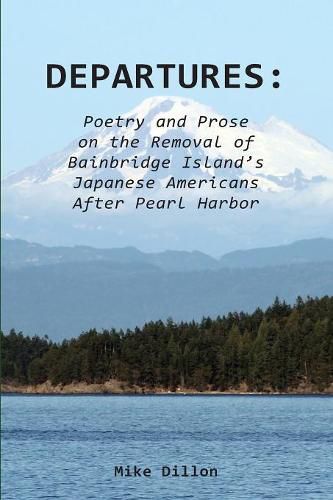Readings Newsletter
Become a Readings Member to make your shopping experience even easier.
Sign in or sign up for free!
You’re not far away from qualifying for FREE standard shipping within Australia
You’ve qualified for FREE standard shipping within Australia
The cart is loading…






This title is printed to order. This book may have been self-published. If so, we cannot guarantee the quality of the content. In the main most books will have gone through the editing process however some may not. We therefore suggest that you be aware of this before ordering this book. If in doubt check either the author or publisher’s details as we are unable to accept any returns unless they are faulty. Please contact us if you have any questions.
The narrative of poetry and prose begins on the eve of Pearl Harbor. An old Croatian fisherman rows across Eagle Harbor on Bainbridge Island to light the kerosene lamps to guide the ferries in, as he does each night. Christmas lights decorate the cottages scattered around the harbor. The lights of Seattle glow to the east. A star falls from the wayside of infinity.
The next morning, a Sunday, brings the bombing of Pearl Harbor.
The owners of the Bainbridge Island Review, Walt and Milly Woodward, work into the wee hours to publish a special edition. Walt Woodward reminds his neighbors, I am positive every Japanese family on the Island has an intense loyalty for the United States of America and stands ready to defend it. Up and down the West Coast, however, hatred is stirring.
Little more than two months later, President Franklin Roosevelt signs Executive Order 9066 authorizing the removal of people of Japanese ancestry from the West Coast of the United States.
On March 30, 1942, 227 Japanese Americans from Bainbridge Island, under bayonet guard, are marched aboard the ferry Kehloken bound for Seattle and a train waiting to take them to Manzanar, a barbed-wire camp in the central California desert. Many of their island neighbors turned out to see them off. Not a few of them weep.
The author, using historical sources and family recollections, has crafted a poetic narrative of one of the most conspicuous injustices in American history, and explores how the healing goes on.
$9.00 standard shipping within Australia
FREE standard shipping within Australia for orders over $100.00
Express & International shipping calculated at checkout
This title is printed to order. This book may have been self-published. If so, we cannot guarantee the quality of the content. In the main most books will have gone through the editing process however some may not. We therefore suggest that you be aware of this before ordering this book. If in doubt check either the author or publisher’s details as we are unable to accept any returns unless they are faulty. Please contact us if you have any questions.
The narrative of poetry and prose begins on the eve of Pearl Harbor. An old Croatian fisherman rows across Eagle Harbor on Bainbridge Island to light the kerosene lamps to guide the ferries in, as he does each night. Christmas lights decorate the cottages scattered around the harbor. The lights of Seattle glow to the east. A star falls from the wayside of infinity.
The next morning, a Sunday, brings the bombing of Pearl Harbor.
The owners of the Bainbridge Island Review, Walt and Milly Woodward, work into the wee hours to publish a special edition. Walt Woodward reminds his neighbors, I am positive every Japanese family on the Island has an intense loyalty for the United States of America and stands ready to defend it. Up and down the West Coast, however, hatred is stirring.
Little more than two months later, President Franklin Roosevelt signs Executive Order 9066 authorizing the removal of people of Japanese ancestry from the West Coast of the United States.
On March 30, 1942, 227 Japanese Americans from Bainbridge Island, under bayonet guard, are marched aboard the ferry Kehloken bound for Seattle and a train waiting to take them to Manzanar, a barbed-wire camp in the central California desert. Many of their island neighbors turned out to see them off. Not a few of them weep.
The author, using historical sources and family recollections, has crafted a poetic narrative of one of the most conspicuous injustices in American history, and explores how the healing goes on.